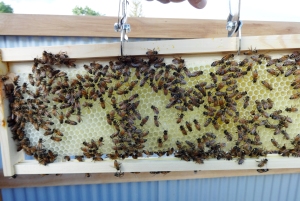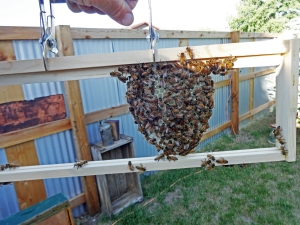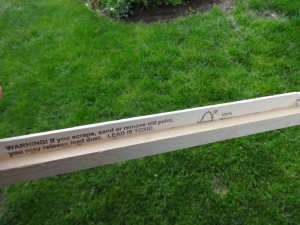At this point, I have two 10-frame boxes. On the bottom is the original deep brood box in which I first placed the NUC on May 10th. This is a box I got from another club member along with some plastic-cell foundation frames that had a little bit of old drawn comb on it. The second box is a cypress, unpainted, medium-depth box. In it are 6 new plastic-cell foundation frames and 4 new foundationless frames that I created by glueing split-down paint stir sticks into the top groove.
I opened the hive this evening, including taking off the top box and setting it aside so that I could look in the bottom brood box. I did not smoke the bees, nor did I wear protection. When I cracked the top box loose from the bottom box, the bees immediately started making a different sound; less of a buzz and more of a growl. “ERRRRRR.” I got stung, once, for the first time, right on the neck.
Next time I am going to try using the smoker.
Here is the original foundationless frame, which, by now, has been in the hive for 14 days:
Here is a plastic-cell foundation frame full of nectar. It was surprisingly heavy. My understanding is that they have to evaporate this down to 14% – 18% water at which point it becomes honey. Then they will cap the cells.
Here is another foundationless frame. This one was added, along with two others (for a total of four), on June 17th. So it’s been in the hive for 10 days at this point.












